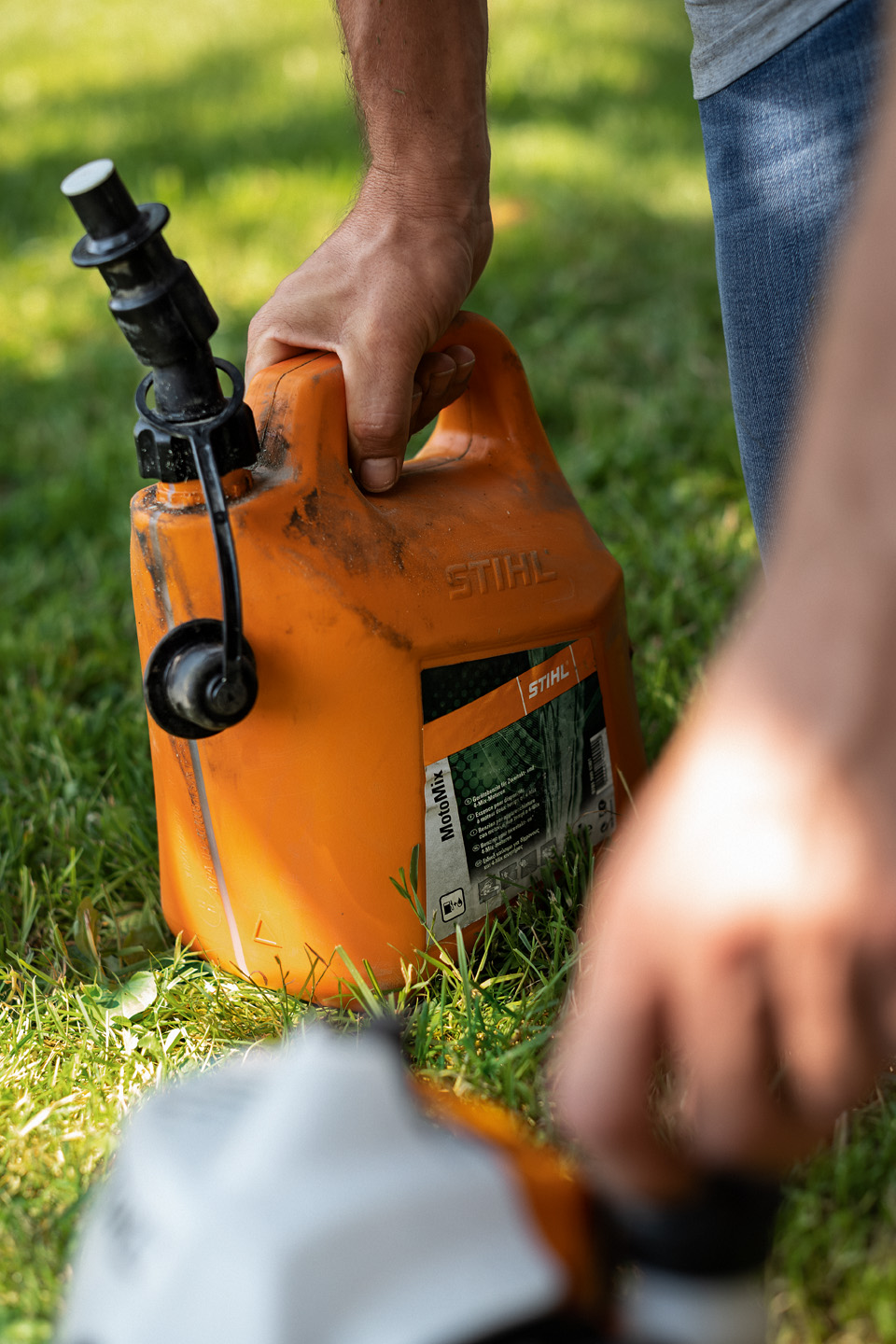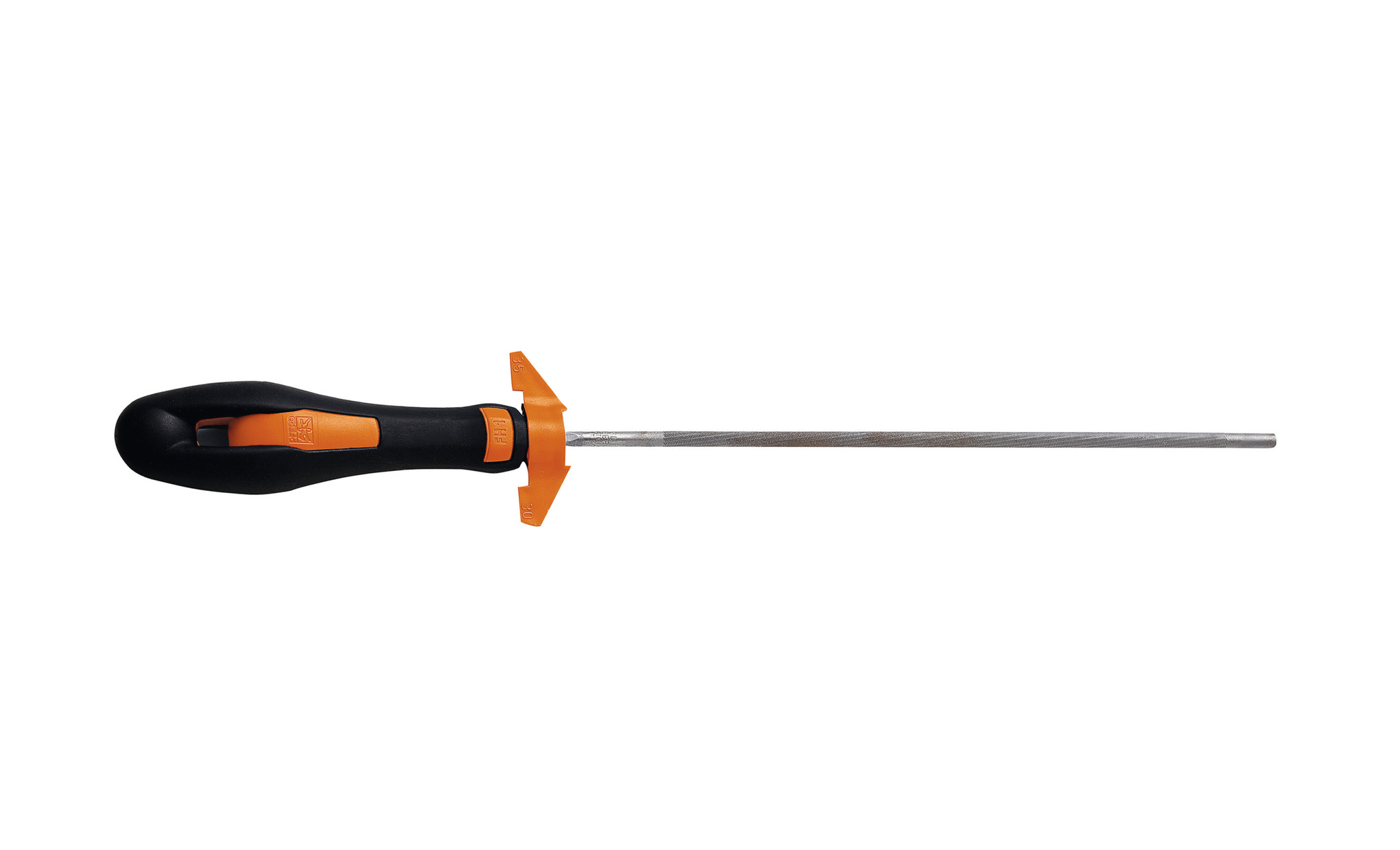Tips for maintaining your brushcutter
You will find tips and instructions for regular maintenance of your brushcutter here to ensure that it will perform well for many years to come.
24.03.2025

Overview: Brushcutter maintenance
- For safety reasons, always read the operating instructions.
- Make sure that the petrol mixture for your brushcutter is correct.
- Always check the cutting tool of the brushcutter before starting work.
- Always clean your brushcutter when your work is done.
- Replace the petrol mixture as necessary.
You need grease to lubricate the gearbox of your clearing saw. We recommend using high-performance Superlub FS gearbox grease for all STIHL brushcutters and clearing saws.

What to consider when maintaining your brushcutter
When it comes to maintaining your brushcutter, reading the operating instructions carefully is the first step – the most important maintenance tasks are outlined there. You should only carry out maintenance and repairs that are described in the operating instructions. Please leave all other work to a STIHL dealer who has the necessary expertise for all repairs. Find out here which tasks you can carry out yourself.
Checking the cutting tool of a brushcutter
Brushcutters work with different mowing heads, which you can replace in just a few simple steps as required. The condition of the cutting tool used plays an important role in ensuring the smooth operation of the brushcutter. To check the cutting tool, you should proceed as follows; please note that the different mowing heads vary in their handling:
- Mowing head with line (e.g. AutoCut, SuperCut): Open the mowing head and check that the cord is wound correctly – the cords should not be crossed over themselves. If the cord is not wound correctly, re-wind the mowing head with STIHL original mowing line.
- Mowing head with plastic blades (PolyCut): Check the cutting head for wear and cracks – on a PolyCut blade, the wear marks indicate the condition of the cutting tool. The three blades of a PolyCut blade must always be replaced as a complete set.
- Metal cutting tools (e.g. grass cutting blade, shredder blade): For metal cutting tools, you must check whether they need to be resharpened. If they are bent or torn, they should always be replaced.

Regular brushcutter maintenance and care
Once you have completed your work, you should perform regular maintenance on your brushcutter and check whether the cutting tool and guard are still correctly mounted.
Before starting work and after each time you fill the tank, you should perform a full inspection of your brushcutter. What condition is it in? Are the tank and tank cap free of leaks? The machine must be cleaned every time you finish working with it, i.e. every day when used professionally.
The functions of the control handle must be checked before starting work and after every time you fill the tank.
The air filter must be cleaned as required, especially in the event of malfunctions. If the air filter is damaged, it must be replaced.
The suction head should be checked in the event of malfunctions and replaced as required, but at least once a year and any time there is a malfunction. Contact your trusted STIHL dealer to check and professionally replace the suction head.
The fuel tank should be cleaned as required.
The carburettor should be checked while the power tool is idling. The cutting tool must not be rotating. You must test this before starting work and after every time you fill the tank. Idling can be readjusted if necessary.
To make sparks fly: the electrode gap must be adjusted in the event of a malfunction. We recommend replacing the spark plug every 100 operating hours.
The intake opening should be inspected each time you finish working with the power tool and cleaned if necessary.
The spark arrestor in the muffler should be checked in case of malfunction and also inspected as required. If damaged, it must be cleaned or replaced. A specialist dealer will be happy to help you with this.
Accessible screws and nuts, except adjustment bolts, should be retightened as necessary.
The anti-vibration elements should be checked before starting work and whenever there is a malfunction. If the anti-vibration elements are damaged, they must be replaced by a STIHL dealer.
The cutting tool must be inspected before starting work and after each time you fill the tank. If it is damaged, you must replace it. You should also ensure it is sitting securely on the power tool before starting work and after each time you fill the tank.
Always sharpen the metal cutting tools before starting work.
The gearbox lubrication must be checked weekly and in the event of a malfunction. If necessary, the gearbox lubrication must be topped up.
Safety labels must be replaced if damaged.
Cleaning your brushcutter
Maintenance is a good opportunity to clean your brushcutter thoroughly – we will explain how to do it.

Tools and materials
Below is a list of the most important tools and materials you need to clean your brushcutter at a glance. When working, you should always wear personal protective equipment in accordance with the operating instructions.
- Brush/paintbrush
- Soft cloth
- Multi-purpose cleaner
- STIHL Varioclean
- Combination socket tool
- Work gloves

Cleaning the guard and housing
To ensure that you can enjoy your clearing saw for a long time to come, you should make it a habit to clean the brushcutter guard and housing immediately after working with the power tool – before any residues dry on. Before starting, pull out the plug on an electric brushcutter, remove the battery on a cordless brushcutter and switch off the engine on a petrol brushcutter.
Use a damp cloth or a soft brush to clean the housing and the guard of your brushcutter, or an all-purpose cleaner for stubborn dirt.

Cleaning the air filter
Air filters clean the carburettor air and become dirty over time. Therefore, you should remember to clean the air filter of your brushcutter when necessary. Open the filter housing as per the operating instructions and remove the fleece or paper filter. Tap it out well to clean the filter of your lawn trimmer.
Please bear in mind that fleece filters are deep filters. This means tapping only loosens the dirt particles on the surface. Fine dirt particles are firmly seated within the material and can only be removed with special cleaners such as STIHL Varioclean. After cleaning with Varioclean when necessary, you should only allow the filter to dry at room temperature.
Some devices have a coarse metal filter instead of a fleece filter. This is used to clean the engine cooling air. When cleaning your brushcutter, simply tapping this out or rinsing it under running water is usually sufficient.
Cleaning the cylinder cooling fins
To ensure that your brushcutter runs safely and can perform at its best, we recommend cleaning the cooling fins of the cylinder regularly. Check that the cooling fins on your brushcutter are clean. If they are dirty, you should carefully clean the cooling fins with a brush or using compressed air.

Cleaning the spark plug
Problems starting a petrol brushcutter may sometimes indicate that the spark plug is dirty. A lint-free cloth is ideal for cleaning the spark plug of your petrol brushcutter. Please follow the operating instructions for removal and testing.
It is worth replacing the spark plug if there are severe signs of wear or after a certain number of operating hours. If possible, you should also remove the cause of the contamination.
Too much engine oil in the fuel or a dirty air filter is bad for the spark plug.
Caution: you should never clean the exhaust or carburettor of your clearing saw yourself. You must visit a STIHL dealer to have the carburettor or the exhaust cleaned.
You can find out how to store your cleaned brushcutter correctly in one of our other guides.

Why won't my brushcutter start?
It may be due to the petrol mixture – this should not be left over from the previous year. If you are not sure how old the petrol mixture is, it is best to replace it.
If the spark does not transfer
One possible source of malfunction is the spark plug. As a wear part, it must be replaced regularly. If a new spark plug doesn't help either, you should take your brushcutter to a STIHL dealer for inspection.




